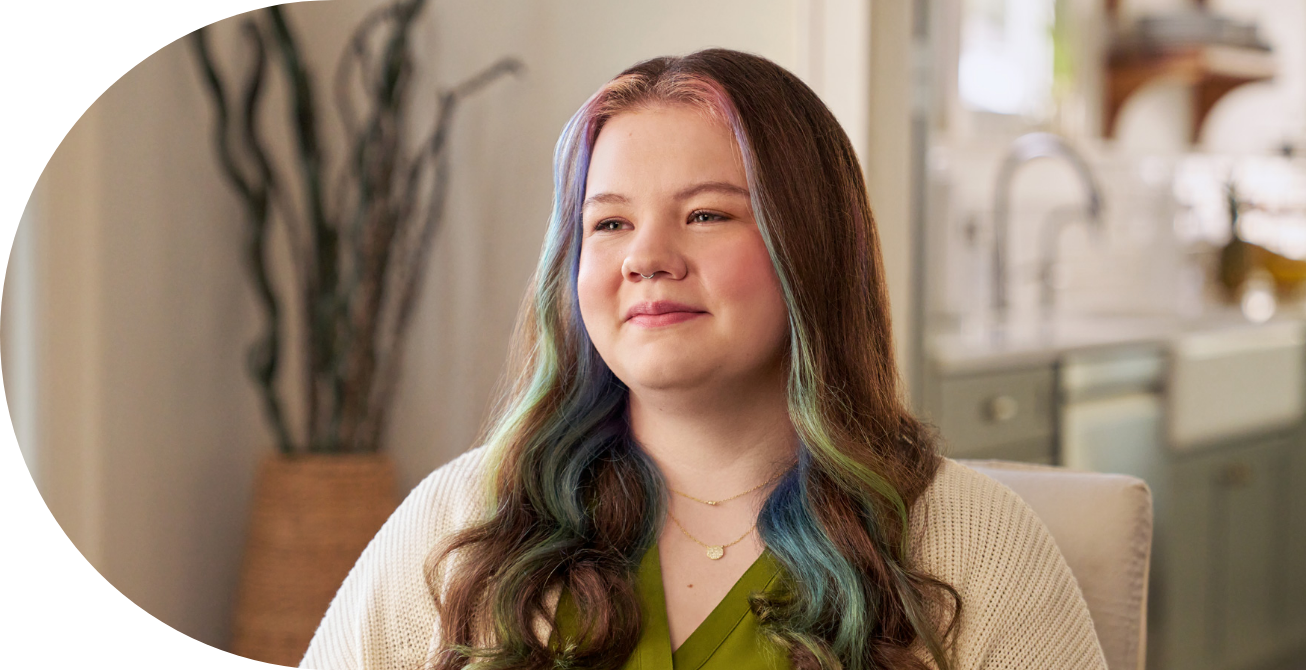Symptoms of narcolepsy are often missed and misunderstood
This can make narcolepsy feel like an “invisible condition”
It can take 8-15 years from when symptoms first start to receive an accurate diagnosis.
Some people with narcolepsy may even experience social stigma from those who don’t understand the condition.
However, you are not alone.
Narcolepsy affects over 168,000 adults and children in the United States.
“Excessive daytime sleepiness became this voice I couldn’t ignore that said, ‘I need to go to sleep, I am too tired to be here right now.’
I wasn’t skipping out on activities I enjoyed because I wasn’t interested in them anymore—but because my body was telling me I had no choice but to sleep.”
– Katie L., living with narcolepsy
Katie was compensated by Avadel Pharmaceuticals
for her time. Individual results may vary.
With narcolepsy, you may be facing disruptions around the clock
Narcolepsy is a chronic sleep disorder. It affects the brain’s ability to control your sleep-wake cycles—disrupting both your days and nights.
Two common symptoms of narcolepsy are excessive daytime sleepiness (EDS) and cataplexy
EDS
- A persistent feeling of sleepiness that disrupts your day no matter how much you slept the night before
- Usually the first symptom people notice
- Can occur at random, like a sudden sleep attack, even when driving or talking
- Can also occur during less active situations such as when watching TV
- Is sometimes mistaken for a symptom of a different condition or goes unnoticed
Cataplexy
- Sudden attacks of muscle weakness often triggered by strong emotions
- Can be mild and feel like knees buckling, or as severe as full body paralysis
- Usually lasts for a few seconds or minutes
- May look different in children than in adults: for children, it can involve changes in the way they walk or weakness in their facial muscles
- Can develop years after symptoms of EDS first start
Individuals featured have been compensated by Avadel. Individual results may vary.

“Before starting treatment, even if I slept a full 8, sometimes 10, hours, I would still fall asleep the next day during class and have to take naps.”
– Tyler F., living with narcolepsy

“I wish cataplexy was a word that everybody knew. Before starting treatment, my experiences with cataplexy could range from tingles in my arms and legs to being unable to move. It’s a vulnerable feeling.”
– Wendy B., living with narcolepsy
Managing your narcolepsy symptoms may be challenging
Current treatment options may cause or even require interruptions in sleep
Other oxybate options require waking up in the middle of the night to take a second dose.
Daytime treatments approved to treat narcolepsy may cause insomnia.
Use these discussion guides to help start a conversation with your healthcare provider about your narcolepsy treatment options.
Use this guide if you are new to oxybates.
Use this guide if you are currently taking an oxybate.
Discuss your treatment options with a healthcare provider who specializes in sleep disorders, such as:
- Pulmonologists
- Neurologists
- Psychiatrists
- Pediatric Neurologists
If you are not already seeing a sleep specialist, your healthcare provider may refer you to one if necessary.
When talking with your healthcare team, it’s important to discuss all of your narcolepsy symptoms, goals, and treatment experiences so that you can work together to find the best treatment fit for you.
In addition to treatment, it’s important to practice healthy sleep habits
Healthy sleep habits help your brain and your body get on the same page about sleep. Here are a few things to remember as you create your own sleep habits checklist:
Have a consistent routine
Try to go to bed around the same time every night
Wake up around the same time every morning
Create a peaceful environment
Find ways to make your room a place that welcomes sleep
Find ways to reduce stress and relax your mind before bed
Make sleep a priority
Build a schedule around your checklist for healthy sleep habits
Keep a sleep journal to help identify what you may want to discuss with your healthcare provider
Remember to talk about your lifestyle, diet, exercise, and sleep when discussing treatment options with your healthcare provider.
LUMRYZ resources to help you prepare for your next appointment.